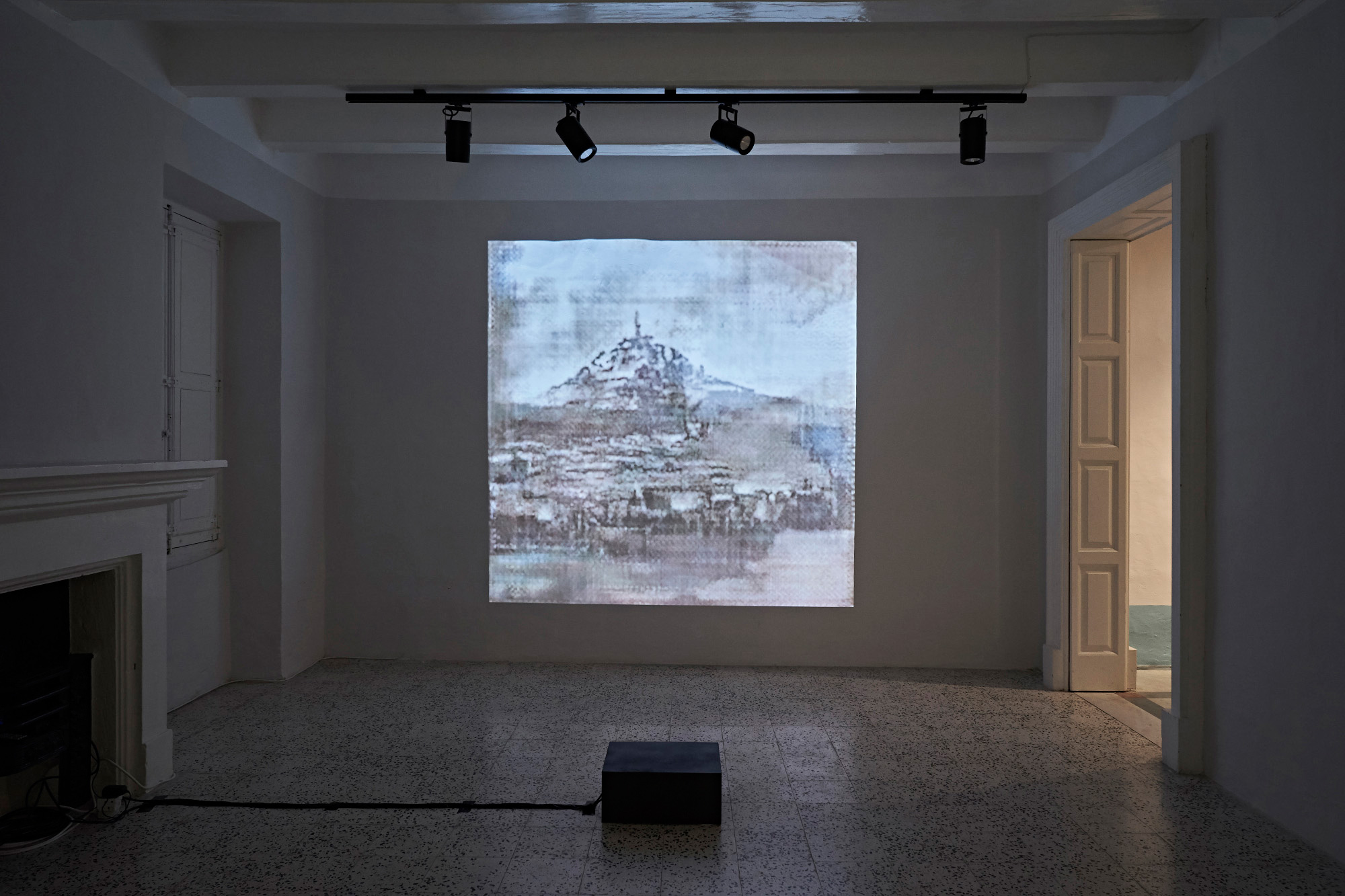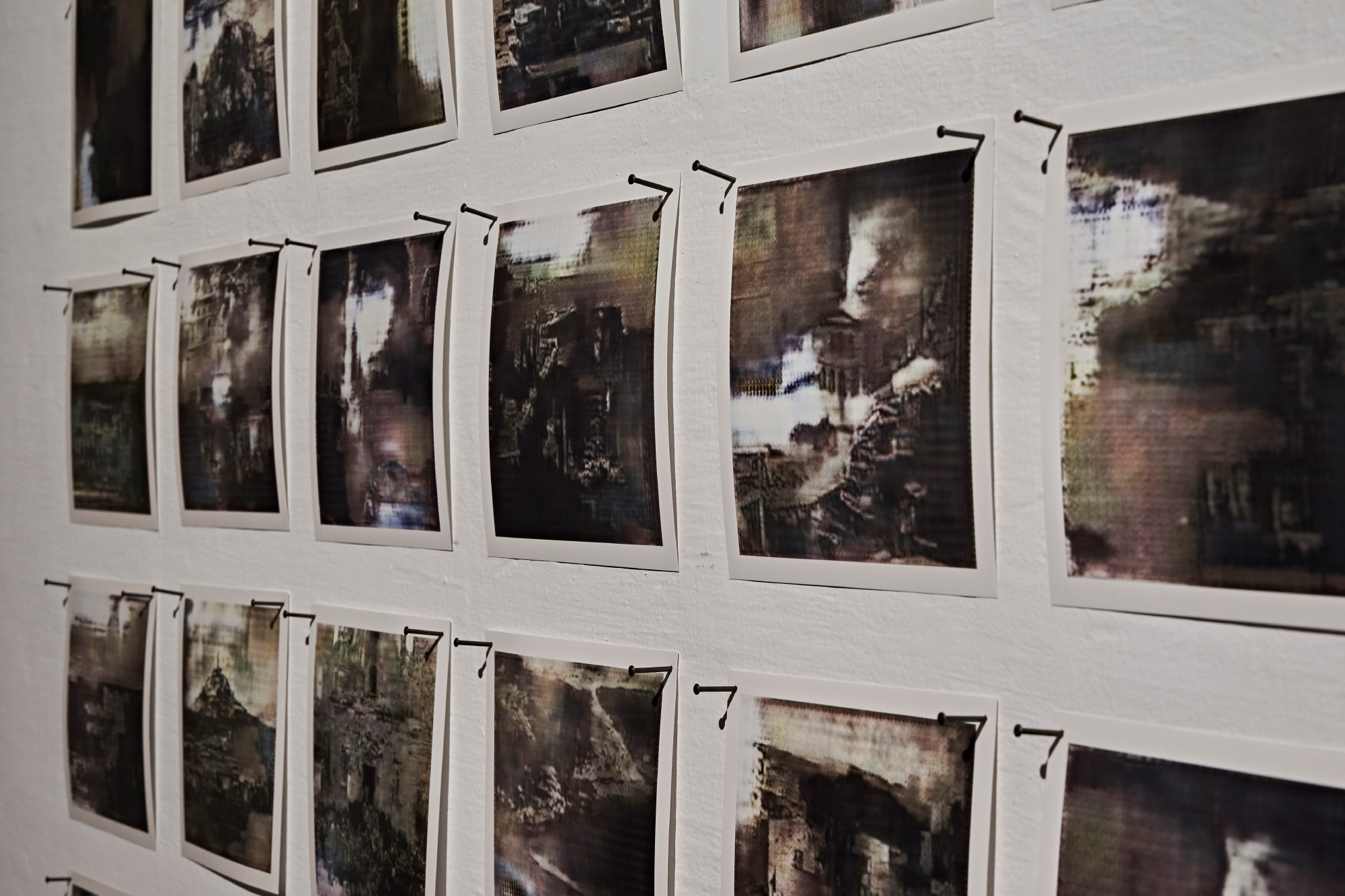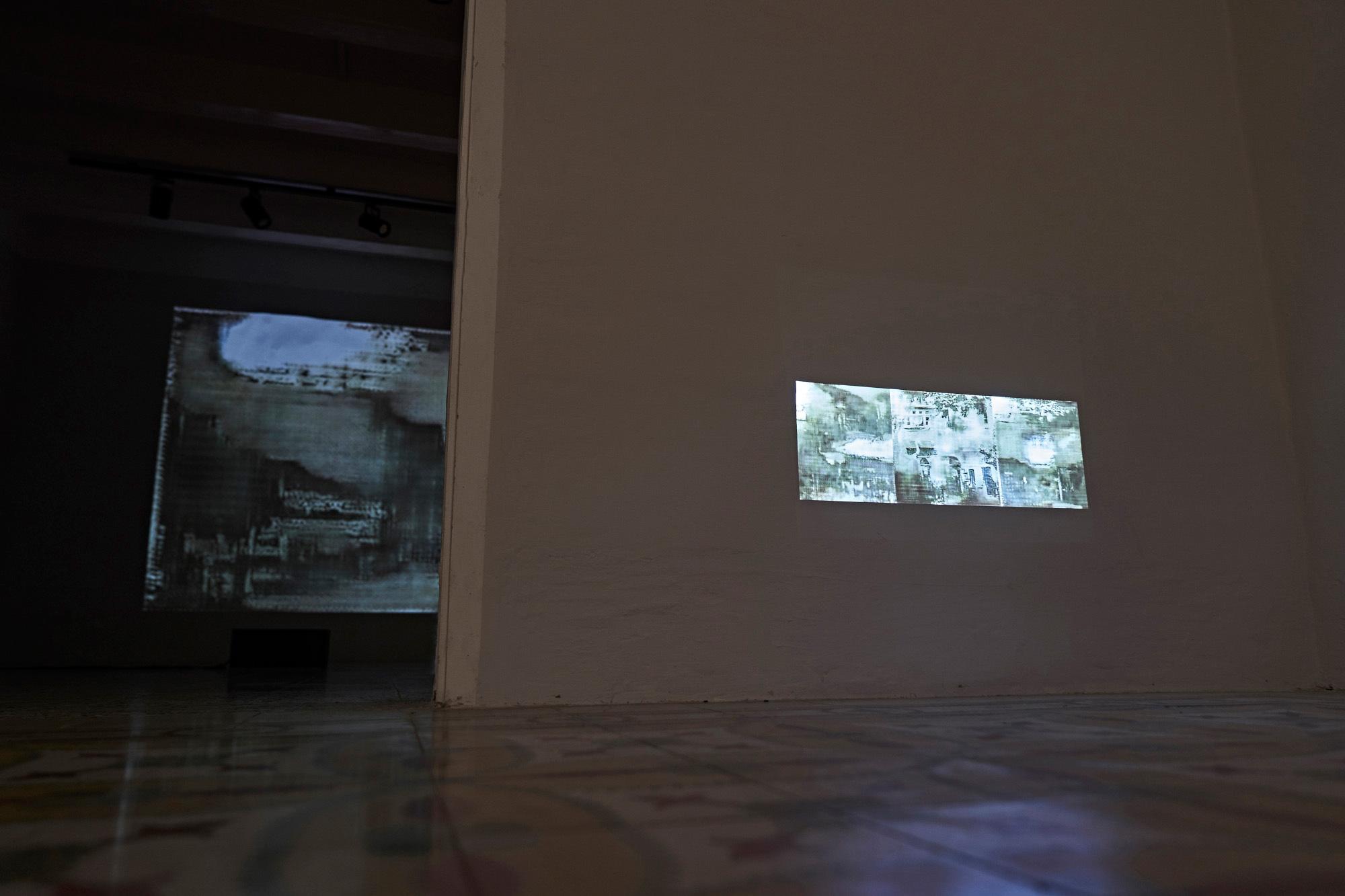Curated by Alexandra Pace
March 2018, Blitz Residency Programme

Neuroscientists discovered years ago that the process of recalling a memory activates the same processes as the act of creating a memory. Every time we remember something we are also actively recreating it. Traces of Things explores what happens when history is remembered and re-remembered by passing through moments of history through an artificial intelligence model trained on material from a variety of public and private Maltese archives. At what point do the images change from one thing to another? At what point do they break down into nothingness?
Every still in Traces of Things has been constructed by a Generative Adversarial Network (GAN), a form of artificial intelligence. Each image is not just parts of photographs that have been stitched together but pictures that have been entirely generated or imagined of what the GAN thinks it should be in an archive of Maltese photography. GANs work by pitting two artificial intelligences against one another to try to produce convincing imagery. One AI works to make realistic images, while a second AI analyses the results and tries to determine whether the images are real or fake. Because the second AI works so hard to identify images as fake, the first learns to mimic the real imagery in ways it could not on its own and eventually the first neural network should be able to generate imagery that is almost indistinguishable from the real thing.
To begin with, it moves smoothly through the space of images, giving a meandering, dreamlike quality to the results – results that are sometimes recognisable but at the same time have small tells that show that they are not real, and imaginary, a house not quite right, the outline of people just off. However, GANs also have a tendency to seem like they are improving – creating better and better and more realistic imagery and then suddenly suffer “mode collapse” and revert back to producing imagery that is more obviously “fake” and not at all like the original images, often almost indecipherable. But this fakeness allows for imagination as well as memory to be brought into play when considering history, asking the viewer to fill in the blank spaces left in the narrative.
A GAN needs to be given a set of images that are representative of the type of imagery that it will be eventually creating. For Traces of Things, I took photographs that showed historic Malta from a variety of sources, some primary, some second hand, some public, some private, to create my own dataset of what the island has looked like. Usually datasets required to run GANs are often extremely large – thousands and thousands sometimes even billions, of images and inputs. There are known issues and problems that come using large datasets, namely that they will repeat the outlook of those who have put them together. As it is impossible to look through it all, the cultural, political or social biases of whatever groups of people that defined the training set will be replicated. There are similar issues with using archives: what we have deemed important enough to count and quantify means that what is recorded is never simply “what happened” and can only show sometimes a very narrow or very incomplete view. In the National Archives of Malta there are acknowledged gaps. In historic “Plans and Maps” of Gozo we are told “it is a very small collection as the majority was not traceable”; in the photographs section we are told “there are also a number of miscellaneous albums” but not what their content is; in the registers there are gaps due to “incomplete collection of census”. There are similar gaps in the public and private collections that I looked at. Traces of Things shows how quickly meaning can break down if only a narrow dataset exists.
Despite building my own dataset and training my own models, it was impossible to predict what will come out in each of the stills. A GAN allows for the type of quality which Petra Lange-Berndt describes as being “where materials develop uncanny lives of their own and display their power to metamorphose”. In Traces of Things, boats turn into houses, houses into mountains, mountains into harbours. This power to metamorphose without real control is something that within an art context is more closely associated with work that deals with biology or nature, than the digital, which tends to be all smooth and clean. This style is (particularly in “poorly-trained” models such as this) is ruined, decaying and decomposed – something antithetical to a large proportion of the aesthetics of contemporary digital art. But at the same time it is beautiful and compelling, and allow for apparent traces of humanness that seem somehow out of place in a digital work . It is reminiscent of the short story Tlön, Uqbar, Orbis Tertius by Borges, an account in part of a fictional country of Uqbar where “the duplication of lost objects is not infrequent” but these duplications – hronir – “were the accidental products of distraction and forgetfulness” and “ less real, but closer to expectations” where over times and cycles become comes “a purity of line not found in the original”, “produced through suggestion, educed by hope”.
– ANNA RIDLER


Anna Ridler is a London based artist and researcher whose practice brings together technology, literature and drawing. She works with collections of information or data, particularly self-generated data sets, to create new and unusual narratives in a variety of mediums, and looks at how new technologies, such as machine learning, can be used to translate them clearly to an audience. She is interested in making work that is not about technology for its own sake, but rather uses these technologies as a tool to talk about other things – memory, love, decay – and to explore the connections and spaces between the tangible and intangible world. She has degrees from the Royal College of Art, Oxford University, University of Arts London and has shown at a variety of cultural institutions and galleries including Ars Electronica, Sheffield Documentary Festival, Leverhulme Centre for Future Intelligence, Tate Modern, Centre Pompidou and the V&A.
All photos are courtesy the artist and Blitz Valletta I Photos by Alexandra Pace.
